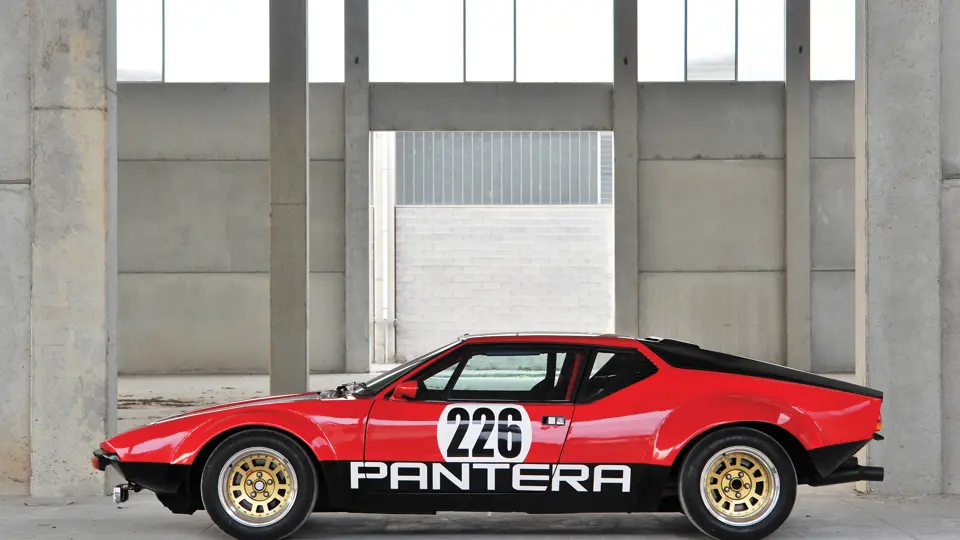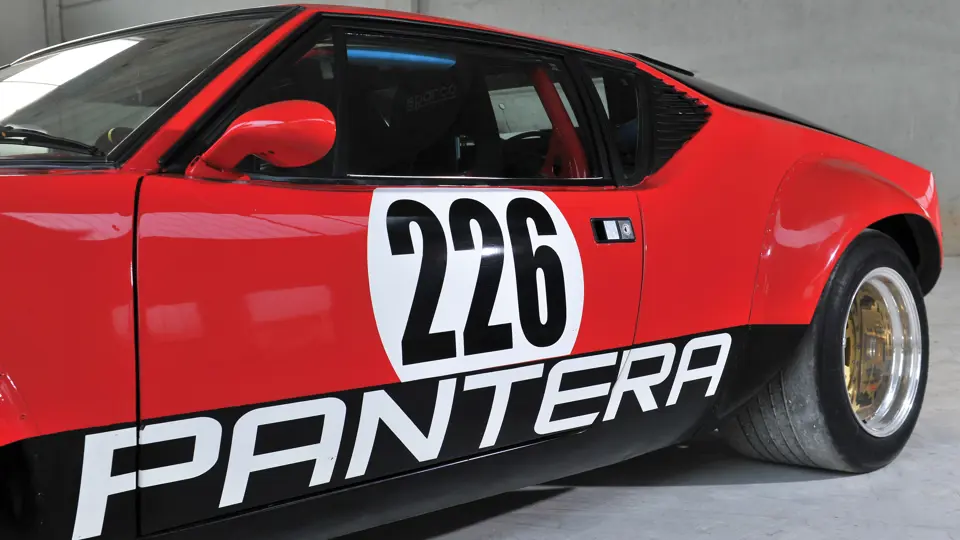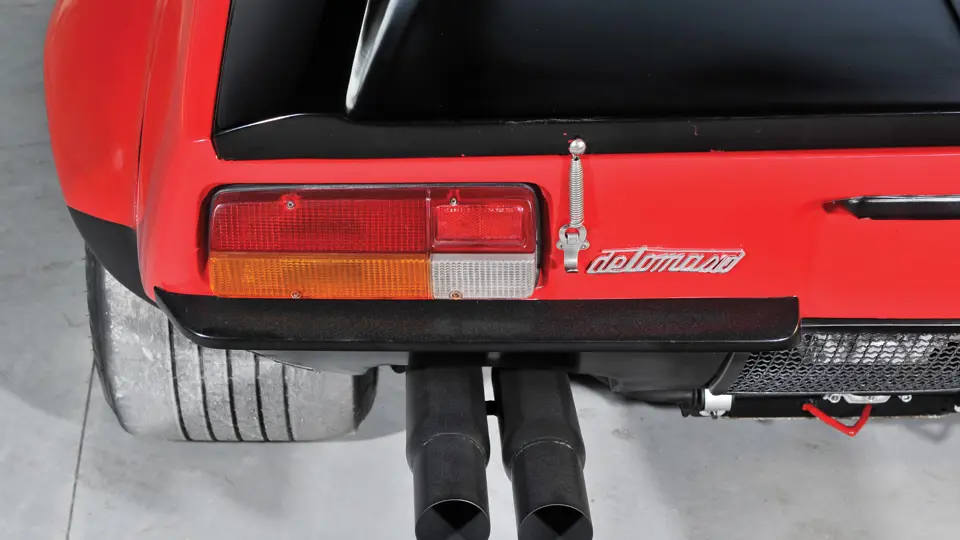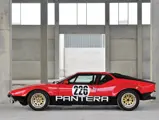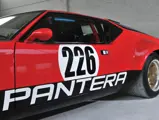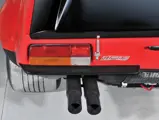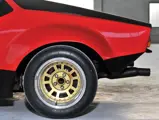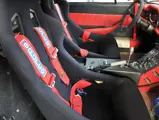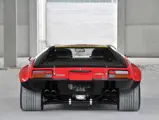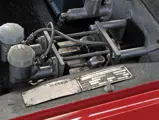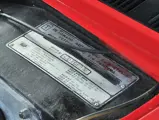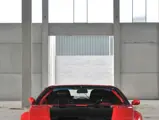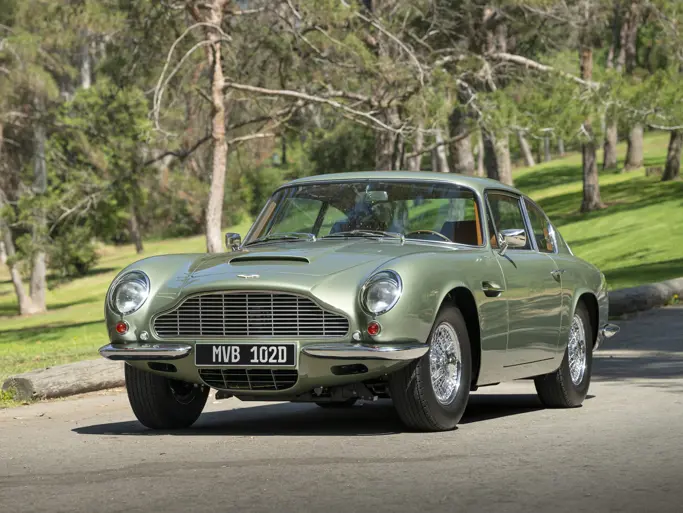
1973 De Tomaso Pantera Rally Car
{{lr.item.text}}
€56,000 EUR | Sold
{{bidding.lot.reserveStatusFormatted}}
- A well-prepared FIA-specification rally car
- Presently set up for thrilling road use
- Accompanied by its FIA and FIVA documents
- Voiture de rallye bien préparée aux spécifications FIA
- Mise au point actuellement pour une utilisation excitante sur route
- Accompagnée de ses documents FIA et FIVA
Est. 360 bhp, 5,752 cc overhead-valve Ford V-8 engine, five-speed manual transmission, independent suspension with front and rear unequal length wishbones, coil springs, and anti-roll bars, and four-wheel ventilated disc brakes. Wheelbase: 2,515 mm
Moteur V-8 Ford, 5 752 cm3, 360 ch env., soupapes en tête, boîte manuelle cinq rapports, suspension avant et arrière indépendante à triangles inégaux, ressorts hélicoïdaux et barre stabilisatrices, freins à disques ventilés sur les quatre roues. Empattement: 2 515 mm.
The De Tomaso Pantera, powered by the Ford 351-cubic inch “Cleveland” V-8 and sharing its mid-engine layout with Ford’s GT40 race cars, translated the race-bred concept of de Tomaso’s Mangusta into a steel-bodied supercar with amenities like reasonable luggage space, air conditioning, and power assists. Panteras were introduced at the New York Auto Show in 1970 and sold by select Lincoln-Mercury dealers from 1971 to 1974.
This example was expressly prepared in accordance with FIA rules for historic rallying, and in fact, it has participated in the Monte Carlo Historic Rallye. The transformation of the car included tuning the Cleveland V-8 for superb reliability, mating it to a five-speed transmission and surrounding it with a full roll cage.
It is interesting to note that despite the rally modifications, the interior remains wholly comfortable, with Sparco racing seats, harnesses, and steering wheel, and even electric windows are still fitted. The driver faces a dashboard of Veglia racing gauges, with additional toggle switches on the open instrument panel.
The body was completely stripped and refinished in two-tone black and red with appropriate racing decals, and it has a racing bonnet and boot that is secured by pins and spring clasps, as well as driving lamps. Racing spotlights also add to the appropriate rally-ready flare. The car rides on TMB racing wheels, but the original Campagnolo wheels and Pirelli P7 tyres do accompany the car. A number of invoices for recent work are included in the file, as are a selection of restoration photos.
In its present enthusiast ownership, the car has been prepared for enthusiastic road use, including the addition of menacing wing flares. With 360 horsepower on tap, this beautifully prepared Pantera offers a great deal of fun and excitement for a relatively modest price, and it would make an ideal entrant to a number of historic events.
La De Tomaso Pantera, équipée du V-8 Ford « Cleveland » 351 ci (5,7 litres) et partageant son architecture à moteur central avec la Ford GT 40, a transformé le concept racé de la De Tomaso Mangusta en une supercar à carrosserie acier dont les aménagements comportaient un espace suffisant pour les bagages, un système d'air conditionné et des assistances. La Pantera était dévoilée au Salon de New York de 1970 et vendue chez les distributeurs Lincoln-Mercury de 1971 à 1974.
Cet exemplaire a été spécialement préparé aux spécifications FIA imposées pour les rallyes historiques et, en fait, il a pris part au Rallye de Monte Carlo Historique. La préparation de la voiture a inclus l'amélioration du V-8 Cleveland pour une fiabilité exemplaire, avec une transmission cinq rapports, et la pose d'un arceau-cage.
Il est intéressant de noter que malgré les modifications pour le rallye, l'intérieur reste confortable, avec des sièges baquets, des harnais et un volant Sparco, les vitres électriques étant toujours en place. Le conducteur fait face à un tableau de bord équipé d'instruments Veglia compétition, avec des interrupteurs additionnels sur le panneau d'instruments.
La carrosserie a été complètement déshabillée et peinte en deux tons, rouge et noir, avec les autocollants de course appropriés. La voiture est équipée d'un couvercle de coffre et d'un capot compétition maintenus par des goupilles de démontage rapide, et elle comporte à l'avant des phares additionnels. Elle repose sur des jantes compétition TMB, mais les jantes d'origine, chaussées de Pirelli P7, accompagnent la voiture. Plusieurs factures correspondant à des travaux récents sont incluses au dossier, de même qu'un sélection de photos.
Entre les mains de son propriétaire actuel, très passionné, la voiture a été préparée pour une excitante utilisation sur route, ce qui comprend l'ajout de menaçantes extensions d'ailes. Avec 360 ch sous le capot, cette Pantera magnifiquement préparée offre des sensations particulièrement grisantes pour un prix relativement modeste, et constituera une machine idéale pour participer à de nombreux événements historiques.




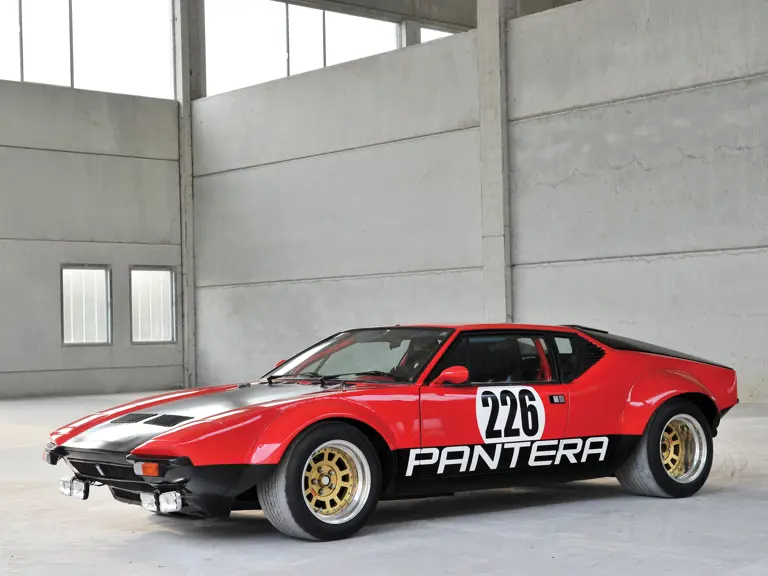

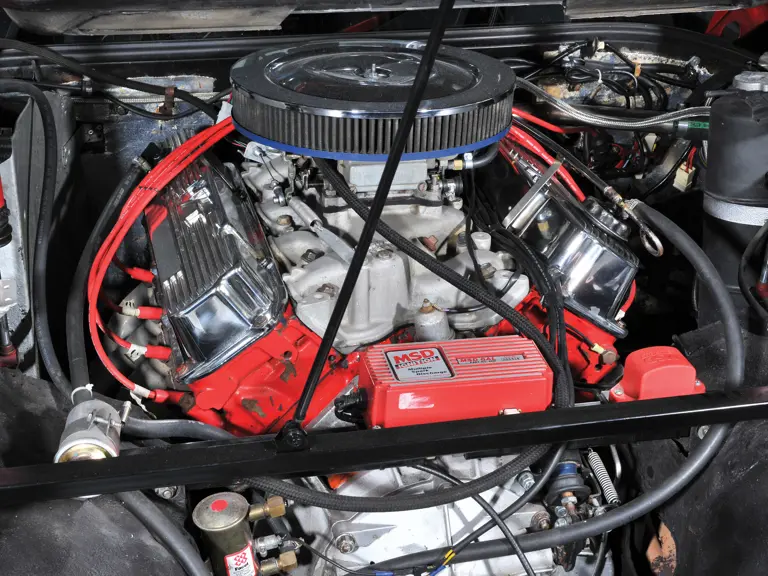
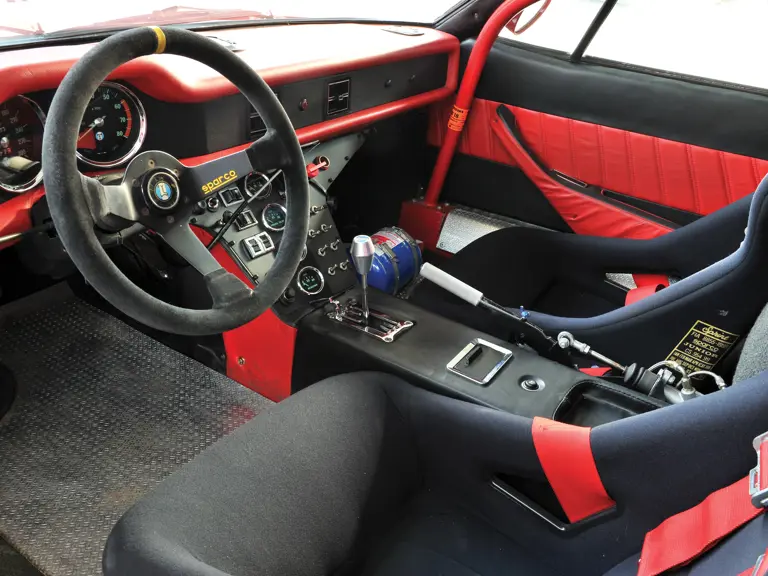
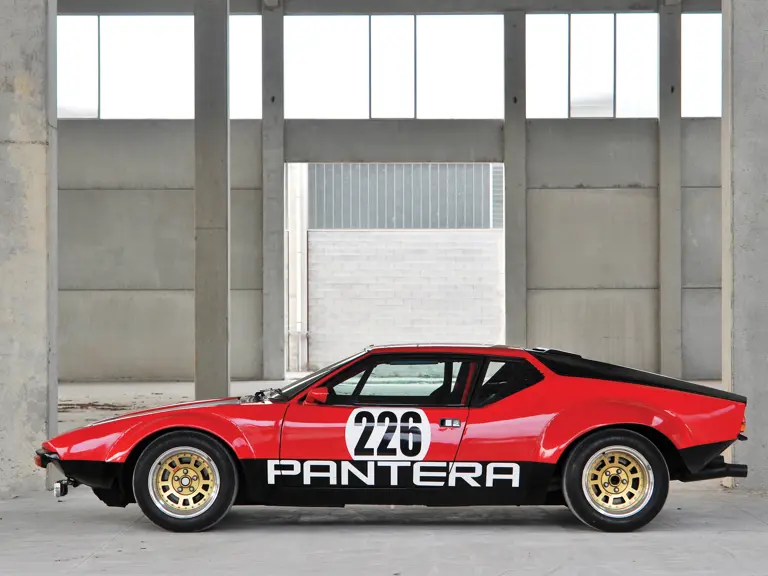
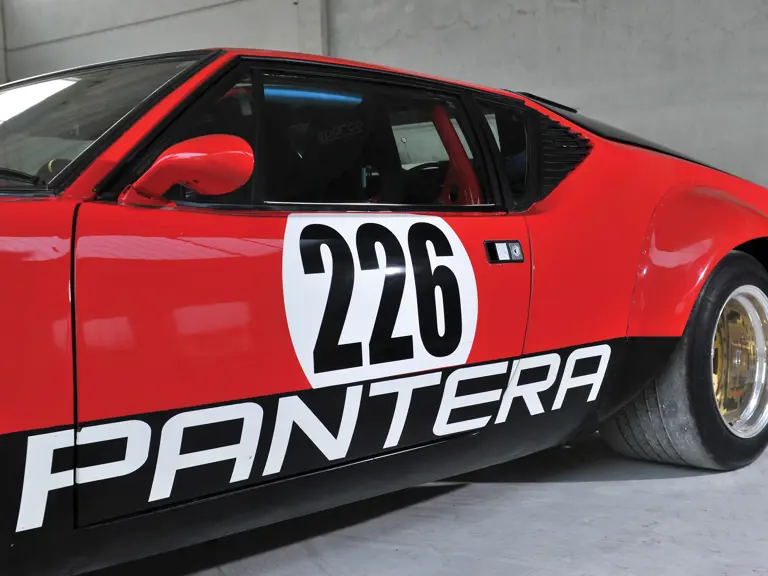
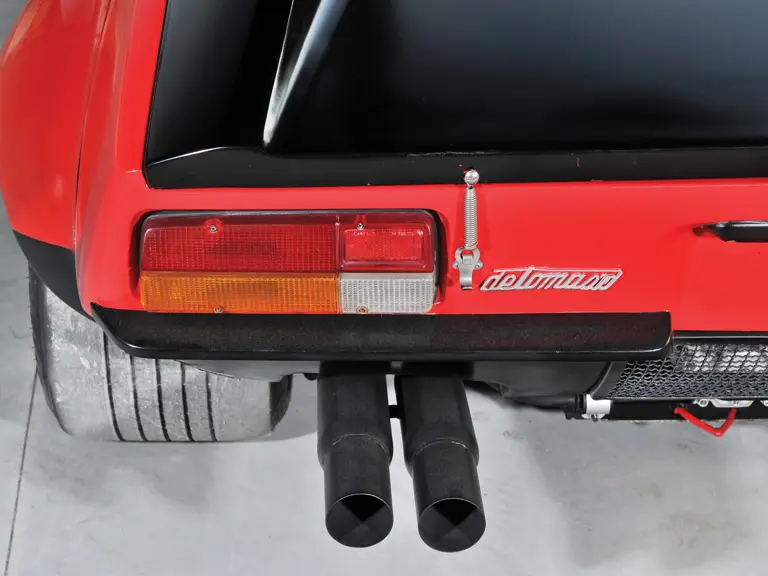
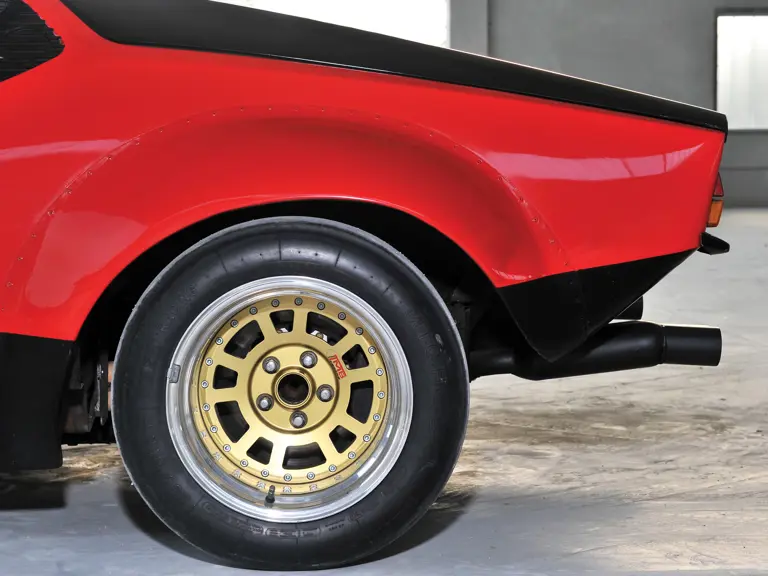
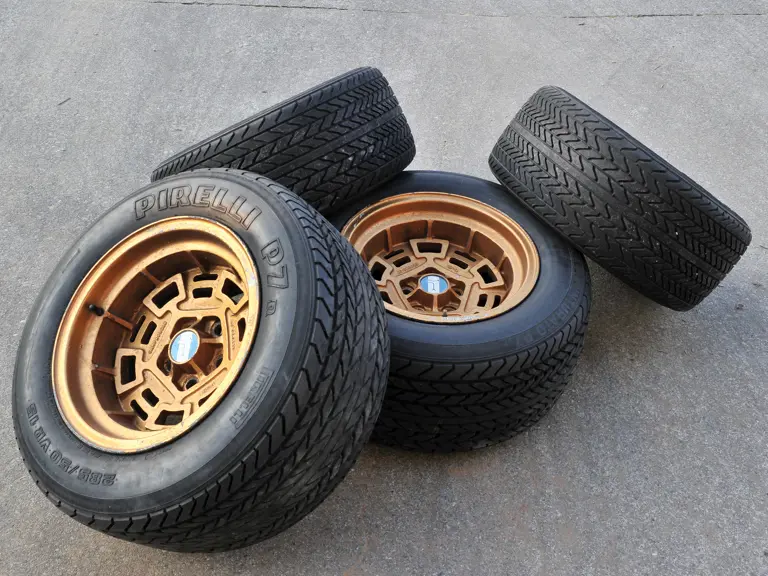

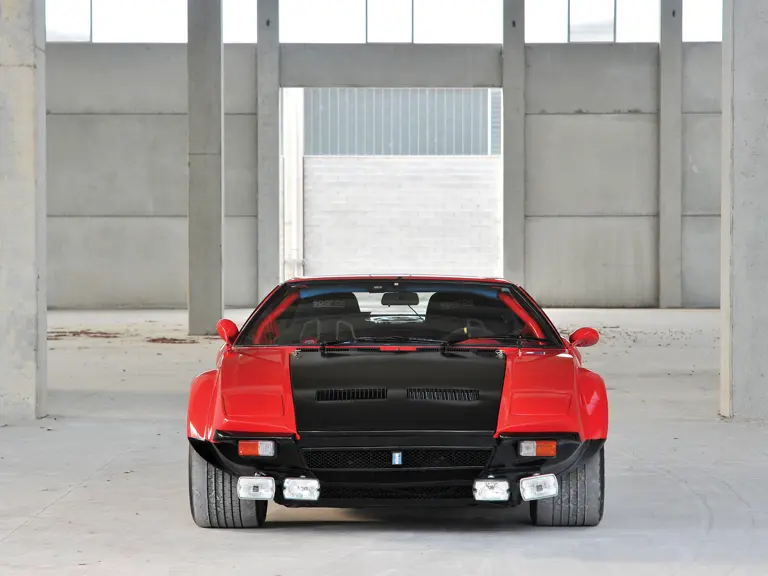
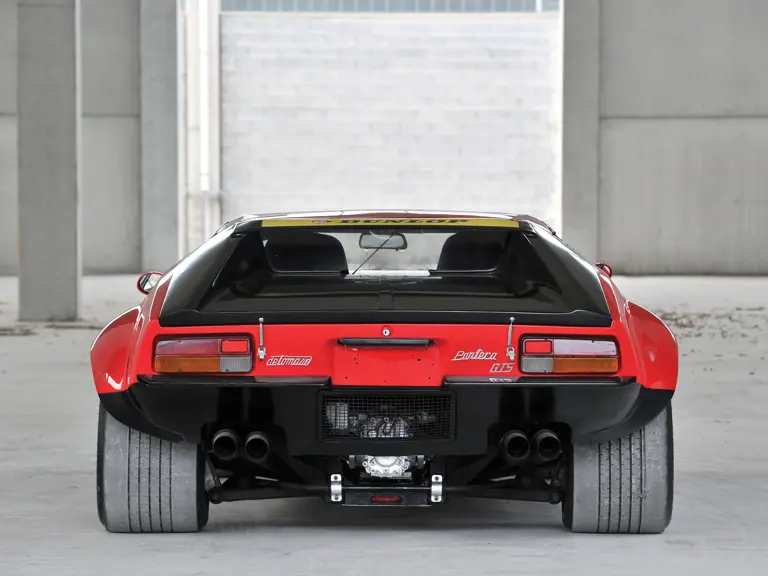
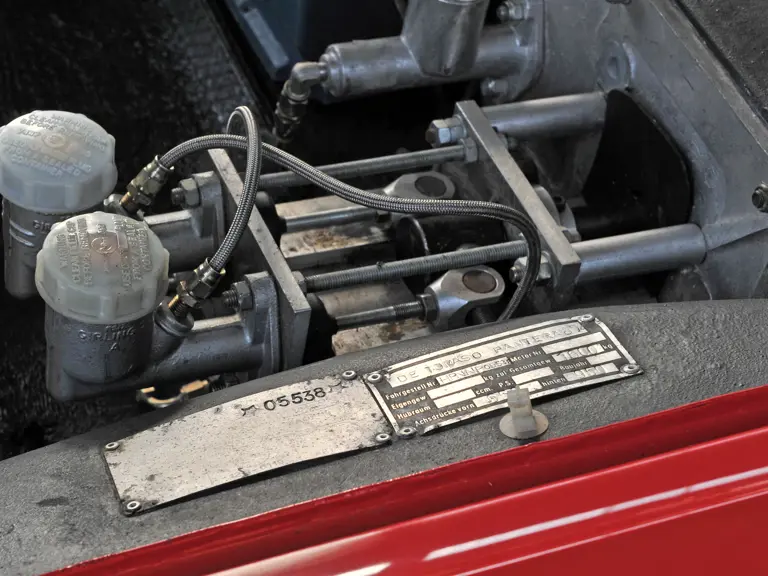
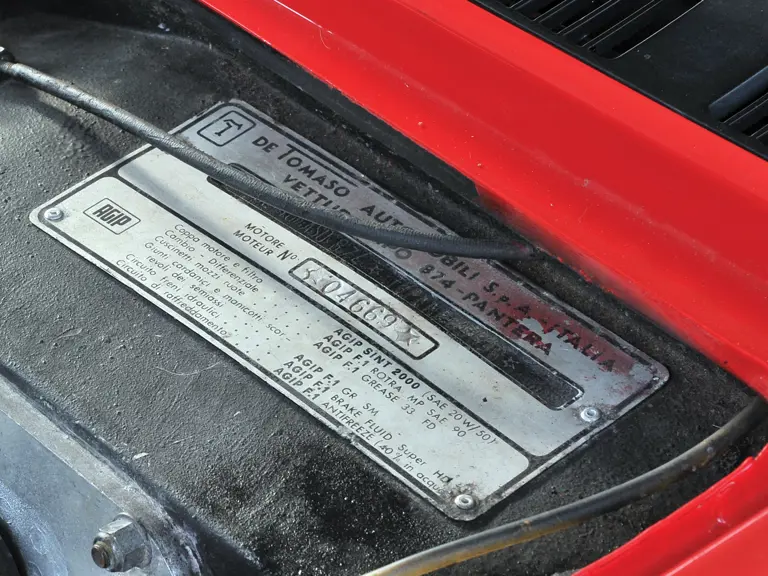

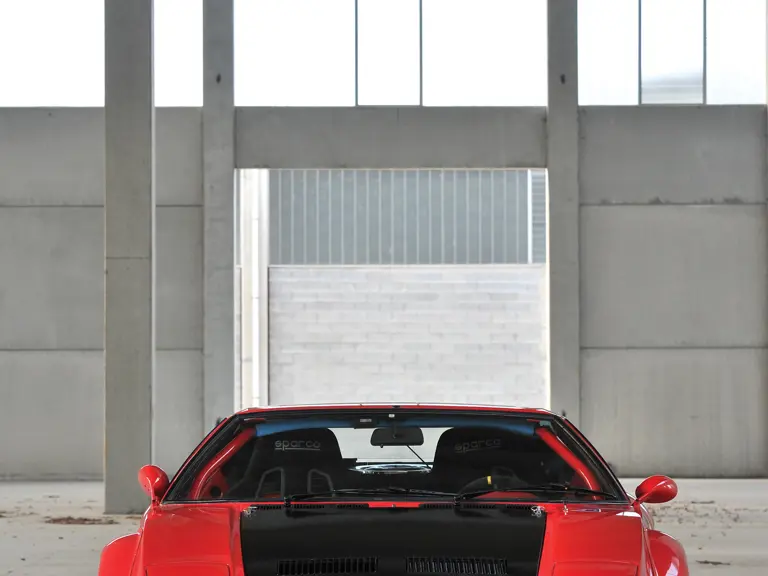
 | Monte Carlo, Monaco
| Monte Carlo, Monaco
